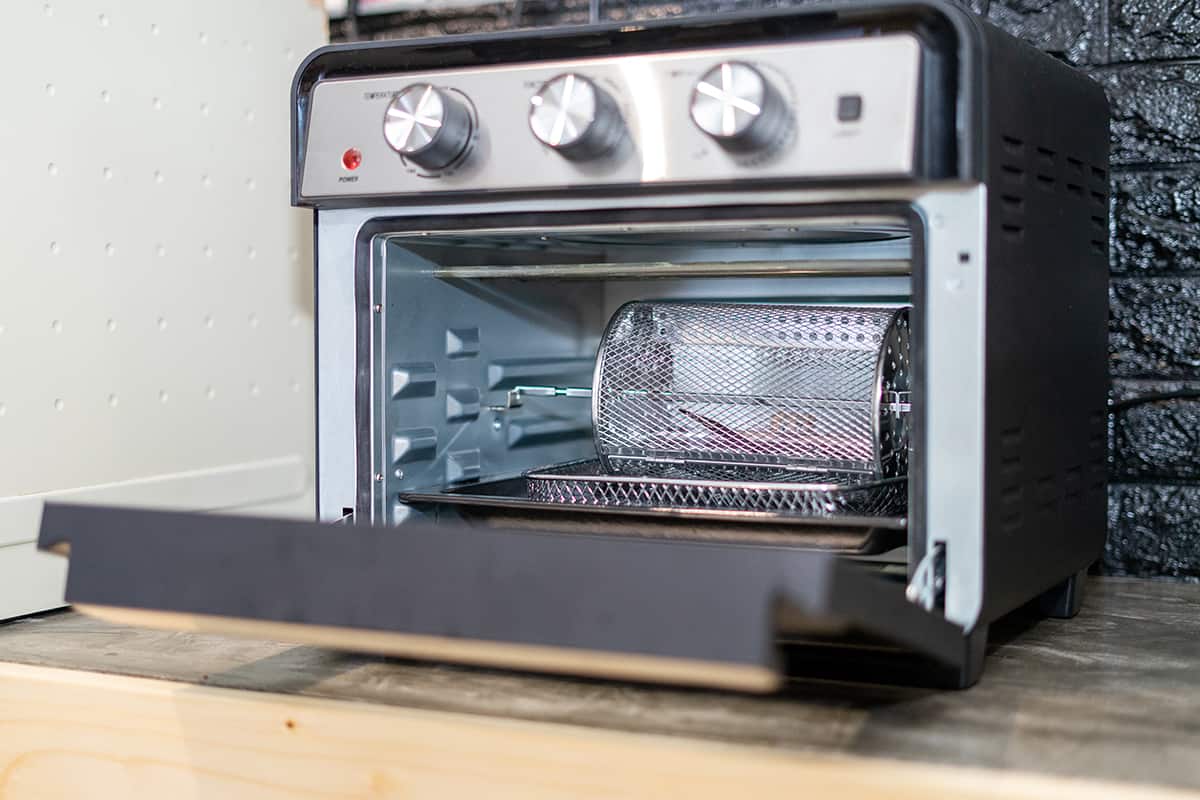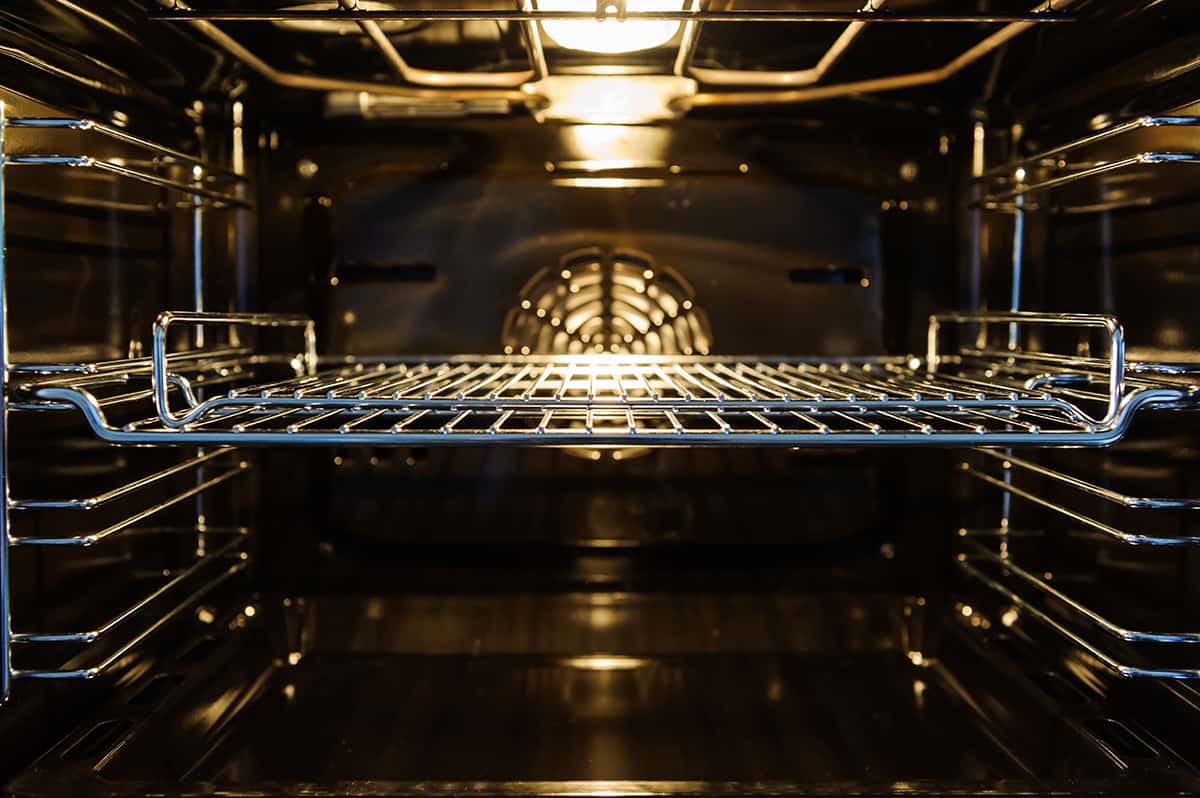It’s not very common for ovens, even electric models, to experience technical problems. However, one of the most alarming things is when your oven will not shut off. So, what’s causing this to happen?
Your oven not turning off can be caused by a wide range of mechanical problems, including a faulty control board, thermostat, broiler, and relay board. In many cases, your only option to restore your oven to working order is to replace the defective components.
Today, I’ll go into greater detail concerning the various causes why your oven won’t turn off, as well as what you can do to resolve the problem.
Oven Won’t Turn Off—Causes and Fixes
If your oven won’t turn off, then you should inspect the following parts.
Knobs, dials, buttons
If your oven won’t turn off, you should inspect the control knobs, dials, or buttons before doing anything else. In the majority of cases, the oven’s controls have become soiled with debris that needs to be removed.
Solution #1: Clean the knobs, dials, or buttons
To begin, let’s remove the gunk residing behind the oven’s controls.
- Shut off the oven and unplug it from the wall outlet. If the oven is hardwired, turn off the power supply to the oven via your home’s circuit breaker.
- Carefully pull out the knobs, dials, or buttons. You might need a flathead screwdriver to remove buttons. Alternatively, you can detach the top panel from the oven to gain better access to the oven’s controls.
- Use a soft-bristle brush to scrub away solid debris and grease.
- Reattach the knobs, dials, or buttons.
- Test the oven.
Solution #2: Replace the knobs, dials, or buttons
Inspect these parts for damage while cleaning them. A crack or lost shard may prevent them from sending commands to the oven properly. Make sure you pick up replacement parts that are suited for your oven.
Control board
The control board is the interface in which you input different commands. It will have a series of buttons, switches, or dials that let you control the temperature, fan (for convection models), and modes (baking or broiling). Unfortunately, the control board is one of the first parts to experience mechanical problems during the lifespan of an oven.
Solution #1: Clean the inside of the control board
Due to its close proximity to the stove range, the control board can become filled with soot and the debris of hundreds of recipes over time. In many cases, cleaning the control board will restore your oven to working order. Here’s how it’s done:
- Shut off the oven.
- Remove the control board’s back panel. In some oven models, this is only doable by detaching the top panel from the oven.
- Look for solid debris inside the control board. Use a soft-bristle brush to scrub the debris off the board.
- Before replacing the control board on your oven, inspect it for damage.
- If there are no clear signs of damage on the control board’s inner workings, reinstall it back on your oven.
- Test the oven.
Solution #2: Replace the control board
However, if you notice dark spots that can’t be scrubbed away, then the control board might most likely be broken. In this case, you will have to replace it completely.
When you have a replacement control board for your oven, here’s how to install it:
- Shut off the oven.
- Detach the current control board.
- Take a picture of the open control board to figure out where each wire belongs.
- Disconnect the wires from the old control board and remove it from the oven.
- Optional—Detach the old control board’s overlay and align it with your new control board.
- Connect the wires to their correct positions based on the picture you took earlier.
- Reinstall the control board, plug the oven in, and see if it turns on and off.
Relay board
The relay board is an internal component that is responsible for regulating voltage in the oven’s heating element. The control board sends electronic signals to the relay board, which then starts or stops the flow of electricity into the oven’s heating coils.
Solution: Replace the relay board
If the relay board cannot receive stop commands from the control board, your only option is to replace the relay board completely.
- Shut off the oven.
- Move your oven forward to access its back panel.
- Remove the back panel.
- Locate the relay board. It will look like a rectangular box with 3 or 4 mounting screws.
- Disconnect all cables from the relay board and unscrew the mounting screws.
- Install the replacement relay board with the mounting screws.
- Reconnect the cables before closing the oven’s back panel.
- Test the oven.
Consult your oven’s paperwork to figure out where the relay board is located. Alternatively, you can employ the help of professional repairmen.
Thermostat
An oven’s thermostat is in charge of regulating the internal temperature of the oven. When the oven has reached the desired temperature, it will command the control board to limit or stop the flow of electricity through the heating coils.
In extreme cases, the heat from the heating coils may cause certain parts of the thermostat to meld together, preventing it from sending stop commands to the control board. However, one clear sign that the thermostat is on the fritz is that the oven won’t turn on or off.
Solution: Replace the thermostat
You will need to crack open the oven to access the thermostat. You should use a multimeter and ohm test the thermostat for continuity. If the multimeter registers a negative reading, the thermostat needs to be replaced.
- Shut off the oven.
- Detach the back panel.
- Locate the thermostat. It might look like a small box with 2 wires plugged into it. One of the wires may have a heat sleeve near the plug.
- Remove the thermostat and install its replacement.
- Reconnect the cables.
- Test the oven.
The precise method of replacing the oven’s thermostat may be a lot more time-consuming, especially for older oven models. So, consult the paperwork to see how to locate and replace the thermostat and get a professional repairman to do the deed on your behalf.
Bake element
The bake element or heating element is responsible for heating up the air inside an oven. If your oven cannot turn off, odds are the heating element will glow red and continue to heat up the oven. When left to its own devices, the heating element may become damaged beyond repair.
Solution: Replace the bake element
First of all, you should inspect the bake element by unplugging the oven and inspecting the cooled-down element for blisters or gaps. Use a multimeter to check the element for continuity. If it’s broken, you’ll need to replace it.
- Shut off the oven.
- Remove the oven racks and other accessories.
- Unscrew the screws that keep the heating element in place.
- Carefully pull the heating element out.
- Disconnect the wires behind the heating element. Make sure the wires do not slide back into the oven. Otherwise, you will have to open the back panel of the oven to access those wires.
- Reconnect the wires to the replacement heating element.
- Fasten the heating element in place with the mounting screws.
- Test the oven.
Broil element
The broil element is just like the heating element, but it is located on the ceiling of the oven instead of at the bottom. And just like the heating element, if the broil element is damaged, it may prevent the oven from shutting off.
Solution: Replace the broil element
After testing the broil element with a multimeter and determining that it’s damaged, you will need to purchase a replacement broil element.
Replacing the broil element is similar to replacing the bake element. The main difference is that you will have to remove the oven’s back panel to gain access to the wires that connect to the broil element.
Should I Replace My Oven If It Won’t Shut Off?

Electric ovens have a maximum lifespan of 20 years or so. However, improper care can significantly reduce its lifespan, and you’ll have to replace all sorts of internal components to get the oven working again.
Before replacing your oven, check with the manufacturer to see what they can do for you. If the oven is relatively new, you might be able to receive replacement parts or even a discount on labor costs. However, if your oven is older than ten years, you might have to scour the internet to Frankenstein your oven back to life.
If your oven is over a decade in age, getting a replacement oven might be the most cost-efficient thing. Newer oven models use less energy to operate, and you can find replacement parts more easily. That said, it might be possible to salvage your old oven model without having to pay for a brand-new model.
Can I Still Use My Oven If It Won’t Turn Off?
Yes, you can, but I wouldn’t recommend it.
The only reliable way to use such an oven is to unplug it when you’re done baking. However, that will leave its stove range (if it has one) completely unusable. Also, the heating element may reach higher temperatures than normal, which may cause the entire oven to short out.
In short, if you don’t want to replace the faulty parts in your oven, you should probably consider getting a new oven for your kitchen.






